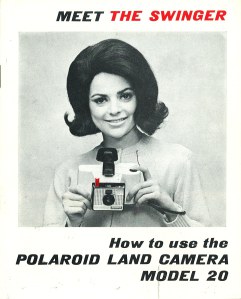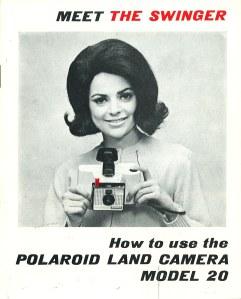
This October, California Design 1930–1965: Living in a Modern Way will open at LACMA. Part of the Getty’s region-wide Pacific Standard Time initiative, the exhibition features modern design and craft from all over California—everything from necklaces to cars. The exhibit will examine the contexts surrounding well-known and loved designers like Charles and Ray Eames, as well as introducing some incredible designers that are not household names… yet.
Uncovering these designers and locating their work have given us some unusual adventures in twenty-first-century curating, exemplified in the case of a recent acquisition—Polaroid’s Swinger Land Camera, model 20 (1965).
We came across the Swinger while researching Henry Dreyfuss, a famed industrial designer responsible for classics like the ubiquitous black Bell Telephone. Though Dreyfuss’s firm had its main office in New York, after 1944 he himself worked at a smaller office in Pasadena. Telecommuting way before the internet made it common, Dreyfuss managed his New York office with frequent visits (packing was easy because he notoriously only wore brown suits) and daily airmail exchanges.
Finding a piece designed in the California office took some work. Many of the clients were Southern California aviation companies, like Lockheed and Convair—and, much as we’d like to, it would be pretty difficult to exhibit a commercial jet! Surprisingly though, we learned the office handled accounts from several eastern companies, including Polaroid.

Henry Dreyfuss and James M. Conner for Polaroid Corporation, The Swinger, Land camera model 20, 1965, Decorative Arts and Design Council Fund
Once we saw the Swinger, a camera designed especially for the youth market, it seemed to be an obvious choice. In addition to its appealing mod form, the camera was designed to be easy to use, a hallmark of the Dreyfuss office’s work and influence.
Russell Flinchum, Dreyfuss’s biographer, put us in touch with James Conner, who designed the camera. Over the phone and email, the 88-year-old designer demonstrated his remarkable memory, walking me through details of the camera, such as its innovative light meter which displayed a straightforward “Yes” or “No” depending on whether or not the camera could take a successful picture.
Locating an early Swinger was its own challenge; the model 20 went out of production in 1970. While our first instincts were the usual museums and collectors, a hunch took us to eBay—after all, can’t you find everything there? We found multiple Swingers and bid on one in its original box, complete with instructions and 1960s film coupons.
After winning the internet auction, our Swinger arrived safely at LACMA last year. And thanks to an early television commercial posted on YouTube, we got a glimpse of how its original audience first “met the Swinger.” The 1965 advertisement captures the California spirit, with swimsuit-clad soon-to-be movie star Ali MacGraw dancing to a jingle about its easy-to-use features and affordable price (only $19.95!) as the camera swings from her wrist.
Staci Steinberger
Curatorial Assistant, Decorative Arts and Design



